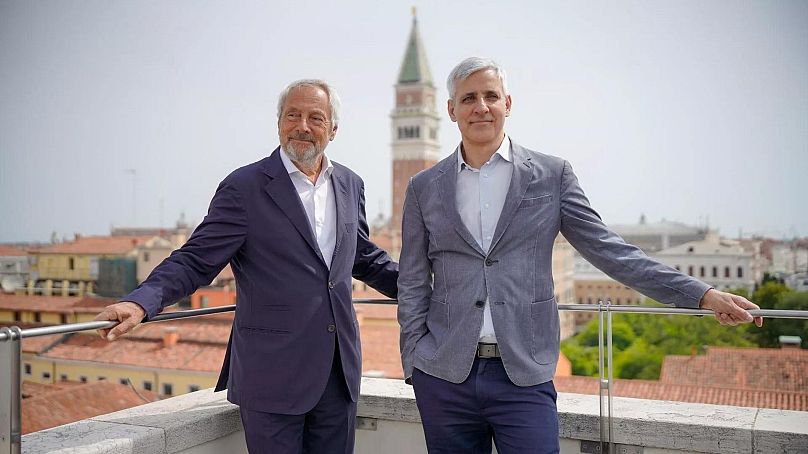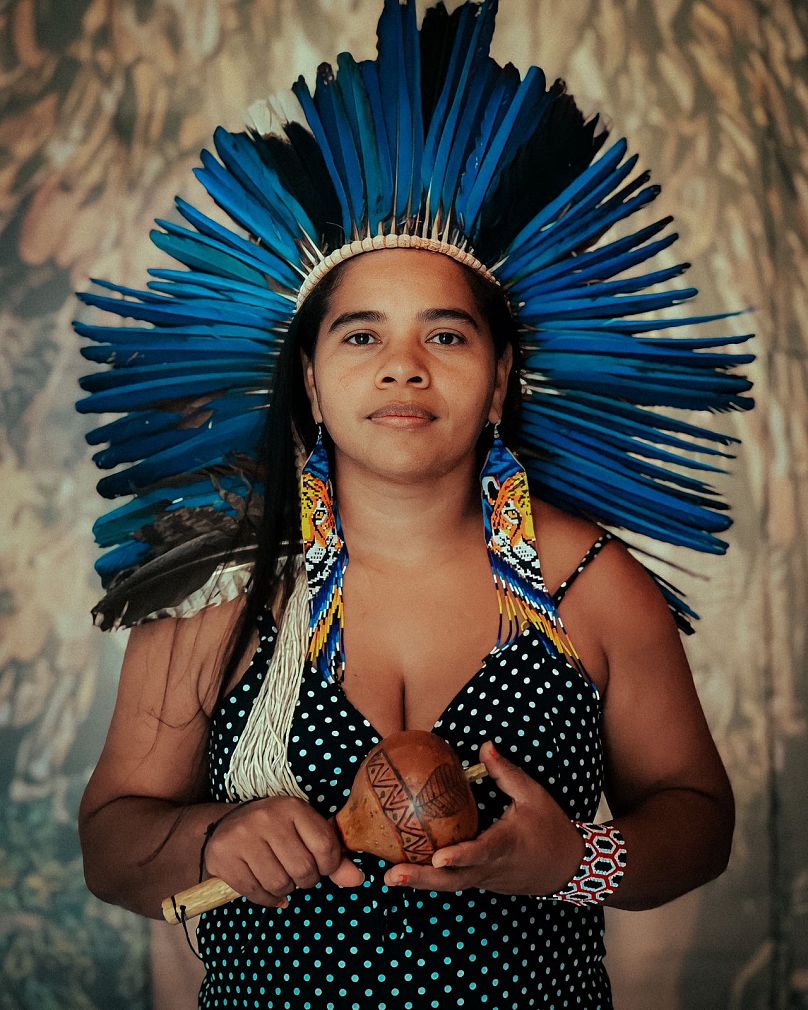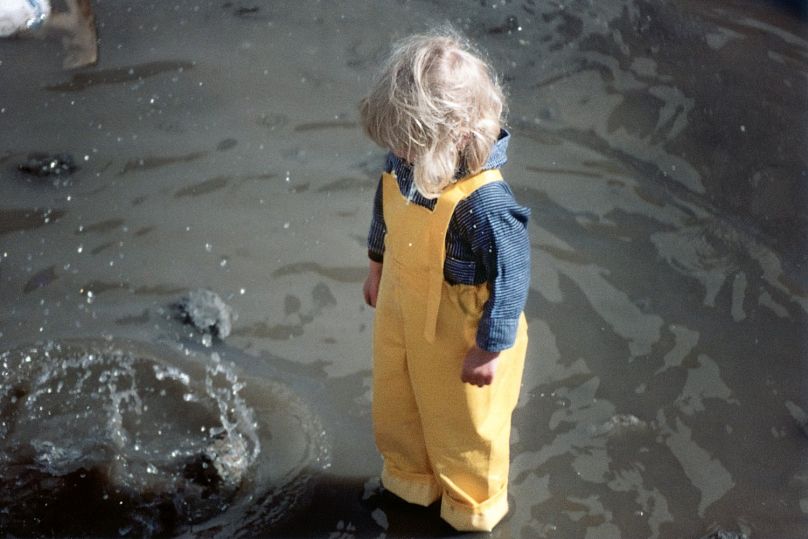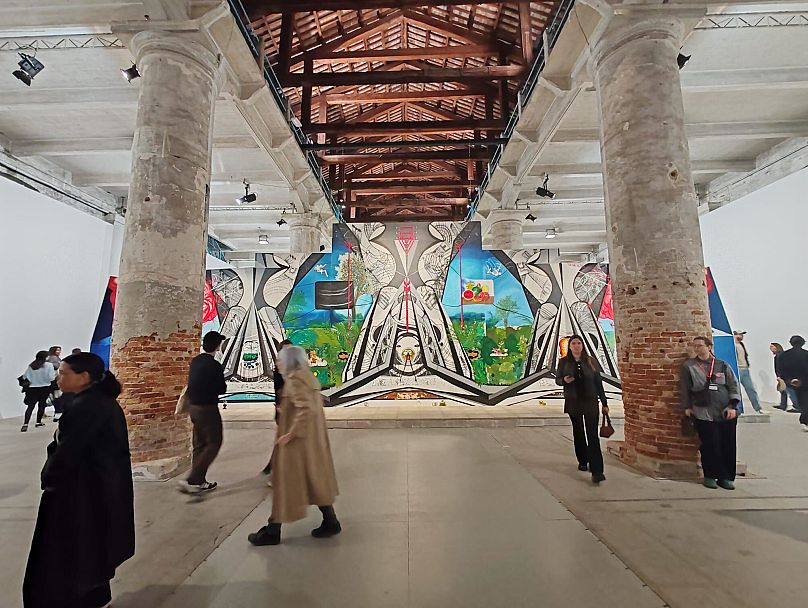At the heart of several national pavilion exhibitions is the complex and often controversial concept of nationality and belonging.
Entitled ‘Foreigners Everywhere’, the 2024 Venice Biennale has at its core the exploration of identity. The international show is notably - and for some anachronistically - organised into national pavilions.
Prompted by the theme, many countries have chosen to examine ideas of nationhood, belonging and foreignness. Collectively, however, this also raises the question of how valid the Biennale’s division of exhibitors into national showrooms continues to be.
‘You are always, deep down inside, a foreigner’
The 60th edition of the international exhibition, curated by Adriano Pedrosa, takes its title ‘Stranieri Ovunque - Foreigners Everywhere’ from the name of a Turin collective that fought racism and xenophobia in Italy in the early 2000s.
“The expression Stranieri Ovunque has several meanings,” explains Pedrosa. “First of all, that wherever you go and wherever you are you will always encounter foreigners - they/we are everywhere. Secondly, that no matter where you find yourself, you are always truly, and deep down inside, a foreigner.”
The curator’s exhibition is divided into two sections. The Nucleo Contemporaneo interprets the theme through the etymology of foreigner as ‘strange’.
“The exhibition unfolds and focuses on the production of other related subjects: the queer artist, who has moved within different sexualities and genders, often being persecuted or outlawed; the outsider artist, who is located at the margins of the art world, much like the self-taught artist, the folk artist and the artista popular; the indigenous artist, frequently treated as a foreigner in his or her own land,” says Pedrosa.
The Nucleo Storico, instead, gathers works from 20th-century Latin America, Africa, the Middle East and Asia. “We are all too familiar with the histories of modernism in Euroamerica, yet the modernisms in the Global South remain largely unknown,” says Pedrosa.
Pavilions grapple with the idea of nationhood
At the heart of several national pavilion exhibitions is the complex and often controversial concept of nationality and belonging. Many deal with the notion of multiple distinct national identities and give a voice to those historically marginalised. The Australia pavilion gives the floor to First Nations artist Archie Moore, whose exhibition will highlight the gulf between Australia’s 254-year history and the 65,000+ year context of his Aboriginal family heritage.
Glicéria Tupinambá will represent Brazil as well as her community of Tupinambá Indigenous people. Her exhibition, titled Ka’a Pûera: nós somos pássaros que andam (Ka’a Pûera: we are walking birds), will showcase the richness of the Tupinambá culture and its story of reclamation and resurgence amid persistent marginalisation.
Denmark’s pavilion will feature Greenlandic artist Inuuteq Storch. His installation titled Rise of the Sunken Sun will juxtapose raw, intimate historical and family photographs with contemporary snapshots of the everyday in order to “tell the Greenlanders’ visual history, not seen through the visitors’ eyes, but through the Greenlanders’ own.”
For France, Julien Creuzet will delve into his own French-Caribbean identity. “His singular work and his gift for oral literature feed on creolisation by bringing together a diversity of materials, stories, shapes and gestures,” according to a press release. “Creuzet was also chosen for the horizons he draws, going beyond the opposition between identity and universality, demonstrating that in the folding of art, the poetic and artistic echoes always trace responses that are as beautiful, joyful and restorative as they are unexpected.”
At Chile’s show, Valeria Montti Colque will instead explore the idea of multi-sited nationhood and connections beyond borders. Born in Stockholm in 1978 after her family was exiled during Chile’s military dictatorship, the artist draws on anthropologist Michel S. Laguerre’s theories of diasporic communities and their relationship with their ancestral lands.
Venice exhibitions interpret the concept of foreignness
Other pavilions have picked up the equally undefinable concept and often perturbing feeling of foreignness instead. Making its debut this year, the United Republic of Tanzania will feature a group exhibition with artists Happy Robert, Naby, Haji Chilonga, and Lute Mwakisopile curated by Enrico Bittoto. It will trace the evolution of the concept of the ‘other’ and consider themes of travel, encounters and re-definition of self.
For Serbia, artist Aleksandar Denić echoes the history of the pavilion building, which has passed between multiple nations, in an installation about residency and transit. He himself is permanently displaced in Germany and prompts the visitor to muse over the meaning of belonging and the sensation of being a foreigner in your own country.
In North Macedonia’s pavilion, Slavica Janešlieva invites visitors to experience feeling like a stranger through a multimedia installation using neon signs, mirrors, feathers and other materials.
With so many pavilions dedicated to the question of national identity and its historical and enduring complexities, attention is also drawn to the Biennale’s own rigid division into national pavilions. Perhaps it's time for a different model that is less geared towards national introspection and more towards international connectedness and dialogue.
The 60th Venice Biennale, curated by Adriano Pedrosa, runs from Saturday 20 April to Sunday 24 November.















